Acer Aspire M3 Ultra - Unusual Ultrabook Review
My dear and beloved habrayuzer! Finally, the stock of ultrabooks
I ended up on the Intel Sandy Bridge platform. Extreme "ultrabook"
In this series I want to talk about - this is the Acer Aspire M3. Why in
quotes? Because the 15.6 "diagonal doesn’t fit into my ideas about
ultra-compact laptops, as well as weight 2
pounds. Why all the same, it belongs to this family and
What other surprises are hidden in this device, it is painted under the cut.

In order not to delay the answers to the questions that are stated before the kata
I'll start with four criteria that Intel calls
mandatory for the device to be called an ultrabook.
1) Ultra-thin - the device should be thinner than 18 mm for devices with
display up to 14 "and thinner than 21 mm for displays larger than 14" - Acer Aspire M3
has a thickness of 20 mm - meets the requirements of Intel? Yes.
2) Ultrafast - The processor must belong to the family of Intel Core
second or third generation and have a heat pack of 17 watts. My
option Acer Aspire M3 has an inside Intel Core i5 2467M with thermal
with 17 watts Corresponds to? Yes.
3) Instant Awakening - Exit sleep mode in less than 2 seconds,
exit from hibernation mode - in 7 seconds. SSD is used for this purpose.
small volume where data are stored and at the expense of the Intel technology
Rapid start requirement is met. And yes again.
4) Energy efficient - More than 5 hours of battery life even at the most
thin models according to indications MobileMark 2007. Discuss the quality and
the relevance of the test will not (I personally do not like it), but the requirements
Intel respected. For the fourth question, the answer is yes.
What we have is a 15.6 "screen, a keyboard with an additional digital
block, discrete graphics card GerForce GT 640M, DVD-drive, weight 2.1
kilograms - and all this is called ultrabook?!?
But what about SSD drives, thin lines, 13.3 "screens, weight about a kilogram?
How does the comparison with the MacBook Air?
Apparently nothing. It seems to me that "the world has moved from its place" and soon everything
computers that can be carried (read, all laptops)
will be called ultrabooks. Not because Intel wants it, but because
that the trend towards refinement and autonomy can be traced
long time ago, and now the right moment has arrived.
Alienware gaming monsters will remain in their niche
tablets will take their own, and classic laptops will disappear altogether. However,
This is the lyrics, the answer to the question - why is this what I intend to tell
called an ultrabook is obtained, so let's proceed to the discussion
the test subject.

Good people from Acer think about their customers and the box has a pen for
carrying. Making minimalist - white cardboard, two photos of the device,
vendor's logo and mention that Acer is official
partner of the Olympic Games.
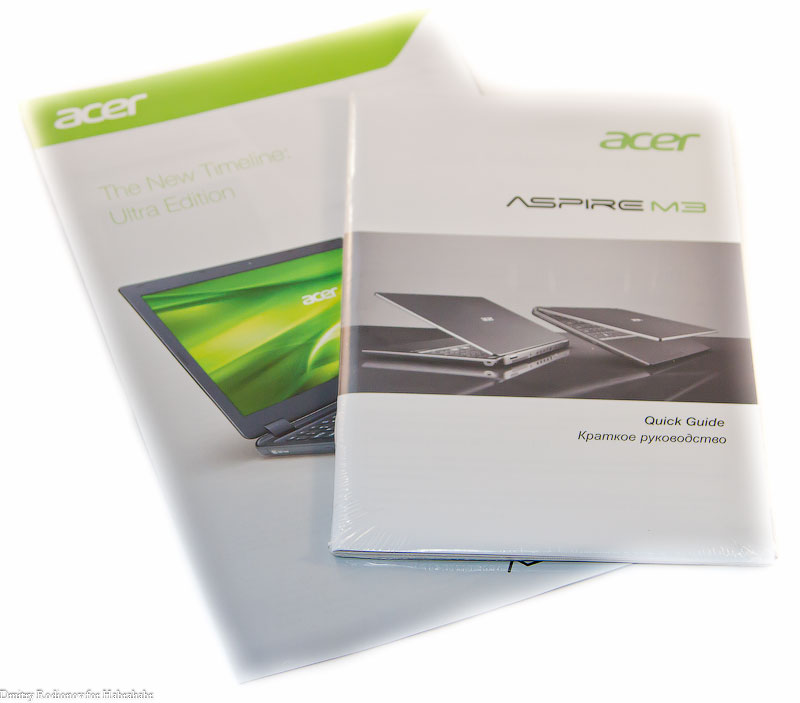
The kit also does not please with special excesses. Two guides and everything.
There are no covers, adapters and other small things that can
cause a short-term release of endorphins in the blood.

And here is the scourge of ultrabooks - the charger. Already simply no strength
talk about it, well, I want damn compactness, although where did she come from
in a 15.6 "screen.
')
The following configuration of Acer Aspire M3 fell into my hands

The case of the Acer Aspire M3 looks interesting, the aluminum cover is painted in
black color. It is the manufacturer's logo.
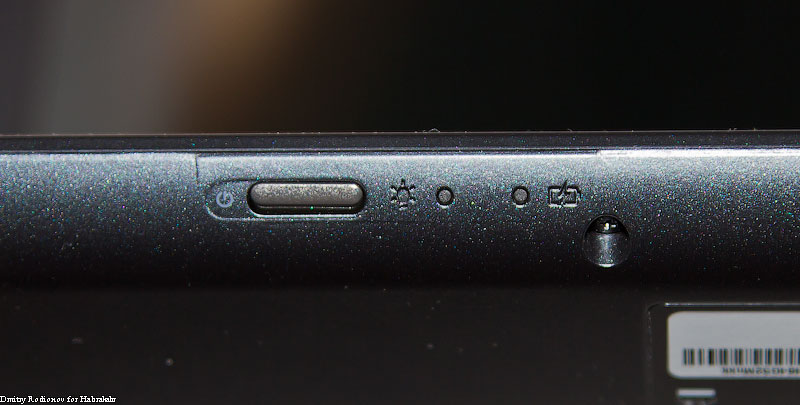
The power button is nontrivial and many times from the first
will find her. Engineers hid it on the front edge of the ultrabook, next to
power and charge indicators. Hard Drive Activity Indicator
absent altogether.

Stickers have not disappeared, but it is worth noting that this time
used stylish gray instead of multi-colored. Logo appeared
NVIDIA GeForce GT.

The right side of the ultrabook is free of additional decorations, here is only the logo of the Timeline series.
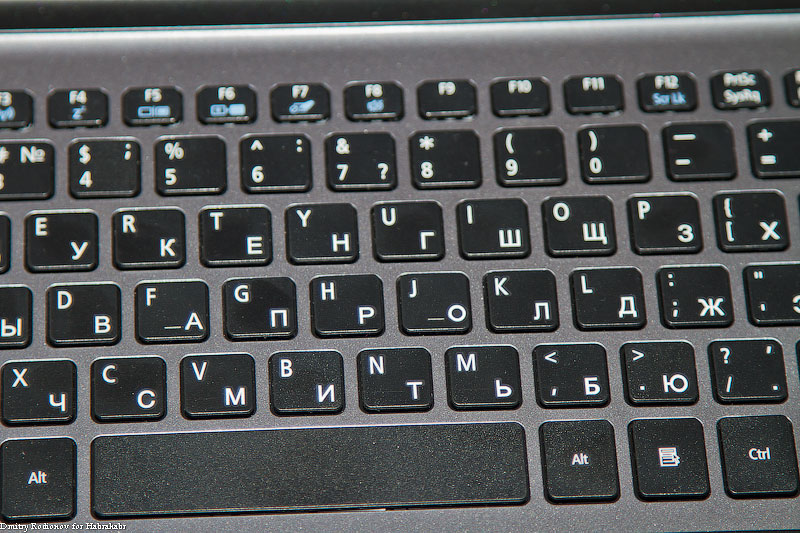

Keyboard island type, the keys have a short stroke, letters
English and Russian layouts are applied in the same white color. On right
there is an additional digital block that is optional
advantage for those who work a lot with digital data.
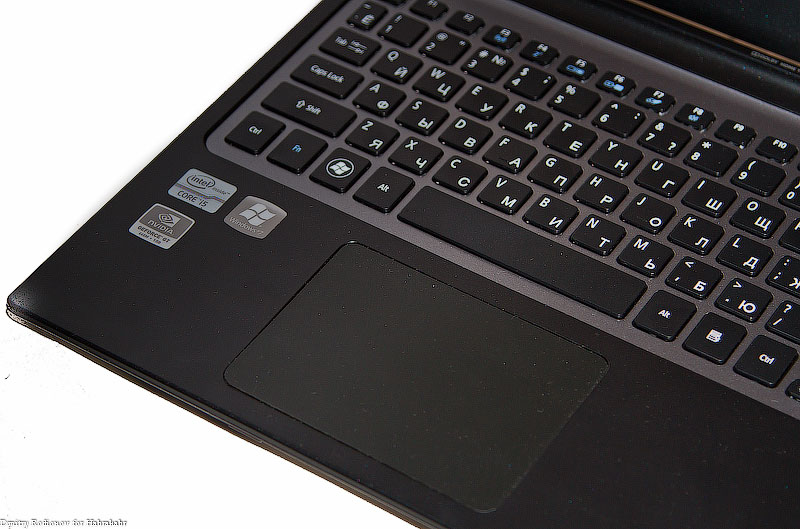
The touchpad is large and comfortable, the keys are not structurally highlighted. To some
I do not like the shift of the touchpad relative to the center of the ultrabook, but this
a matter of habit.

Another surprise from engineers. All ports are located on the rear panel.
Damn inconvenient solution for me, every time I need to connect
USB flash drive, you have to lift the laptop or cover the lid. However,
if frequent carrier changes are not required, the solution will be convenient,
because the wires do not crawl on the table and do not interfere with the mouse
or documents.

On the left, the Acer Aspire M3 has a DVD drive and an SD / MMC memory card reader.
On the matrix of the laptop I will say a few neutral words. Of course, 15.6 "is the most common matrix format and 1366 * 768 is the most
common resolution, but in an ultrabook I would like to see
1600 * 900 (holivar on this topic has been going on for a long time). The advantages include
you can only the fact that this permission will easily pump
GeForce GT 640M graphics card. By cons - glossiness (and on this topic
holivar is coming), terrible viewing angles (hi TN matrix) and uneven
flare. The budget of the used matrix is reflected in full.
With the appearance of everything seems to be clear, inside the Acer Aspire M3 dig deeper
can be with pleasure. A small cover allows access to the hard
disk, RAM, SSD drive and wireless network controller.


After dismantling the memory strip, you can contemplate chips soldered on the board
Memory in the amount of 4 pieces. 4 more are located on the back
fees. Manufacturer - Elpida. The same Elpida BDBG chips are used.
on many budget memory modules for desktop computers.

Here is a separate module. Manufacturer company Micron, capacity 2
gigabyte speed rating of 10600, which corresponds to the frequency of 1333 MHz.
The module can be replaced with analogs with a capacity of 4 gigabytes, increasing
The most total amount of RAM is up to 6 gigabytes. Support 8
gigabyte is not claimed, I didn’t have such a bar at hand,
so I could not check.
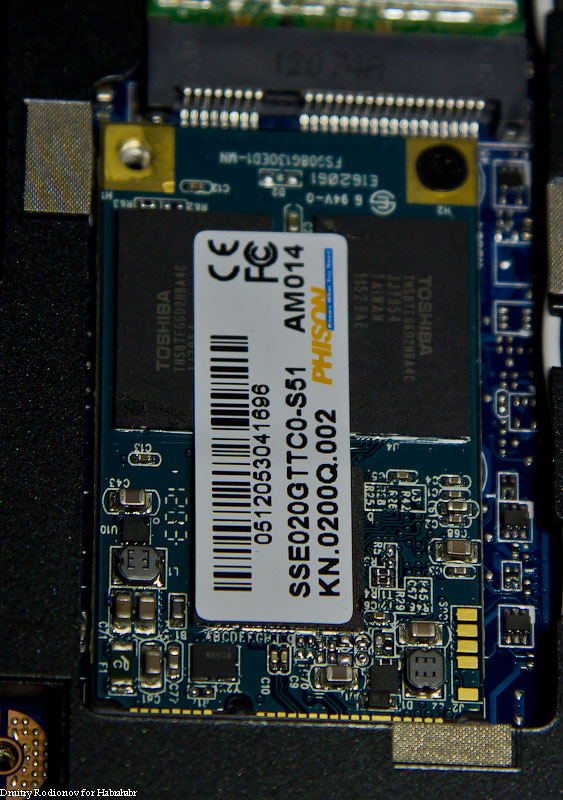
The SSD uses Toshiba’s memory; the controller is
sealed with a company sticker. But this is not a problem =). As
controller chip acts Phison PS3105-S5-1, a similar
the solution is applied in the desktop SSD Patriot Torqx 2. It’s not to say
That this is the fastest controller, rather a budget option.
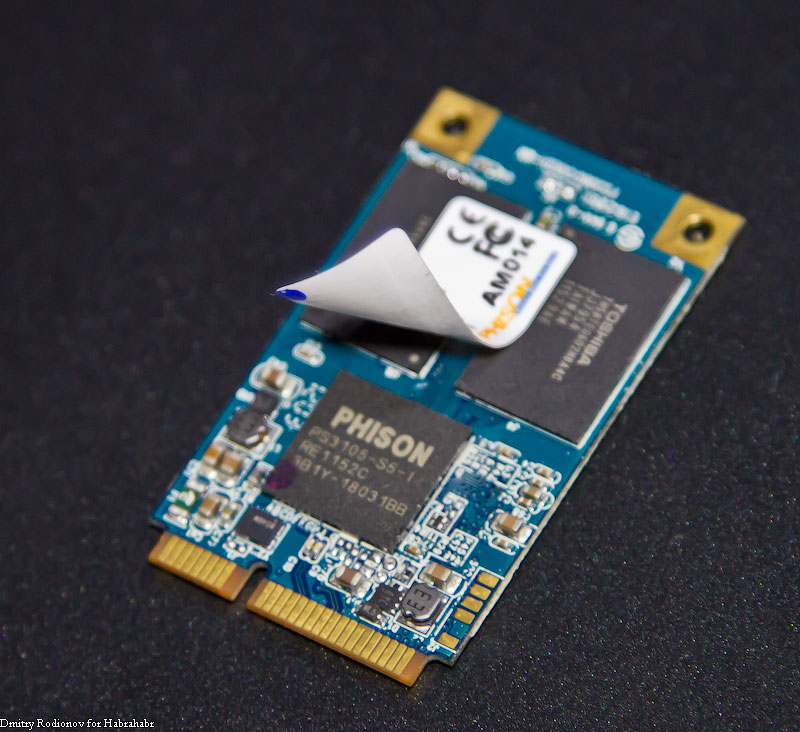
Wireless network controlled by Atheros AR5B97 module supporting b / g / n standards

This is the reverse side of the motherboard. Here you can see
The remaining 4 RAM chips. Next to the cooling system
1 gigabyte of video memory is decoupled.
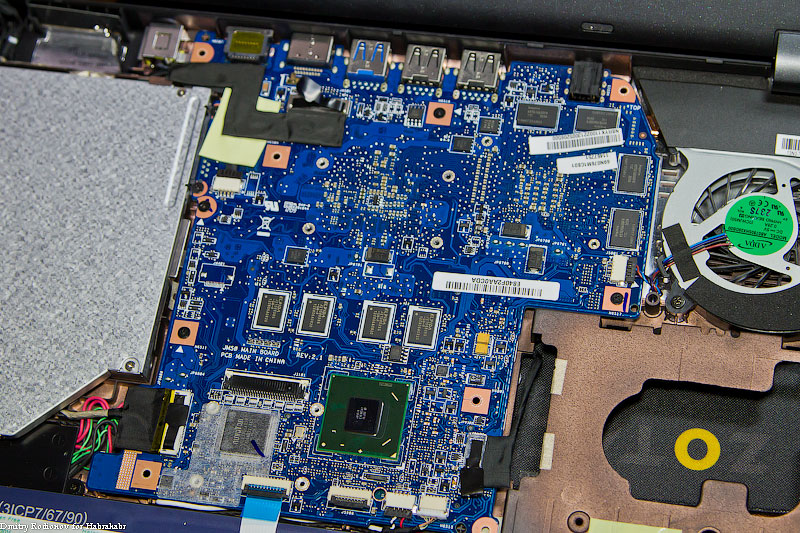
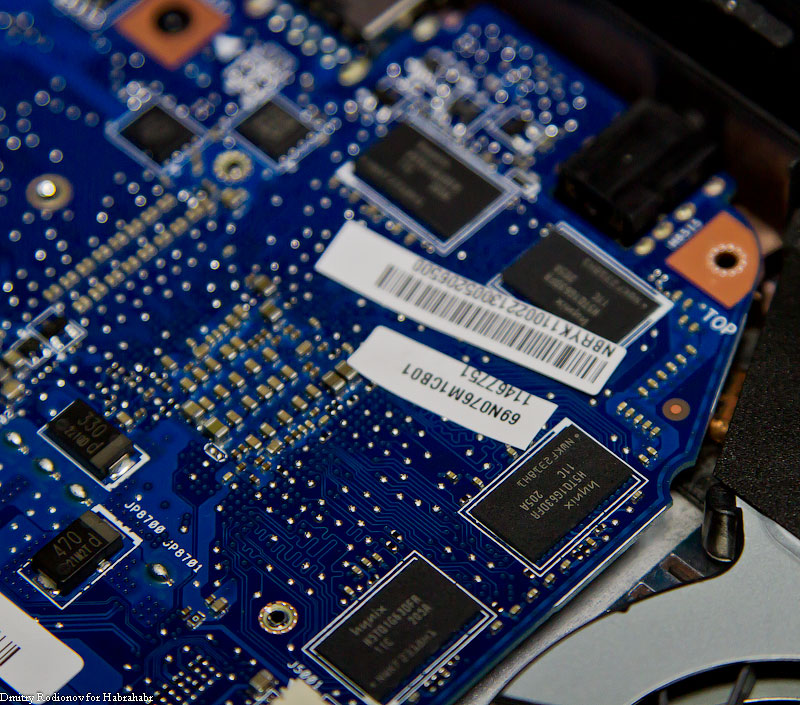
For video memory, Hynix chips are used.

The sweetest - the battery. The output voltage is 11.1 V,
capacity 4850 mAh. According to Intel’s requirements, this battery should
ensure the life of the ultrabook for at least 5 hours.
Intel Core i5 2467M processor clocked at 1.60 GHz, in mode
TurboBoost it rises to 2.30 GHz, and if not required
use of resources - reduced to 800 MHz. Physically
dual-core processor capable of handling four data streams
thanks to HyperThreading technology. Processor Heat Pack - 17
Watt.
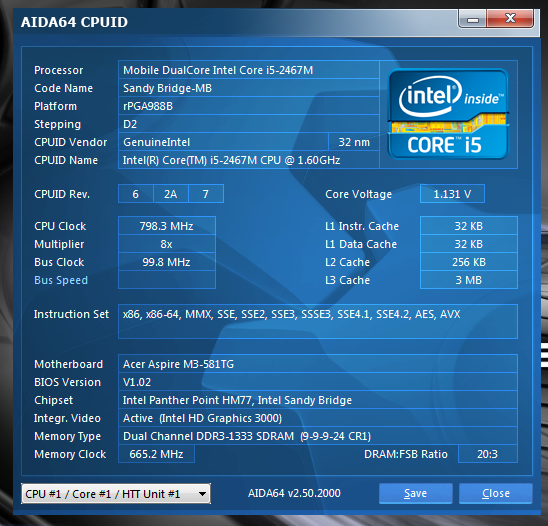
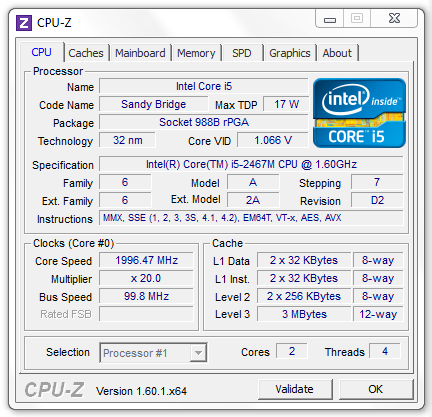
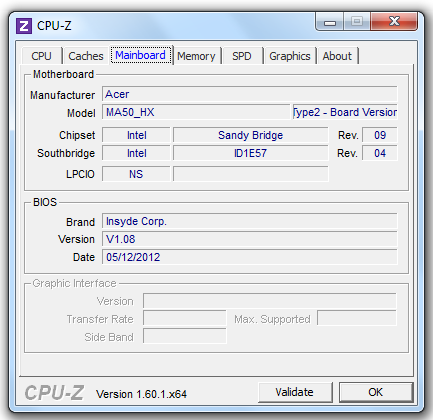
Ultrabook video subsystem consists of two chips - a discrete NVIDIA GeForce GT 640M and integrated into the processor
video core Intel HD Graphics 3000. When the power adapter is connected
the user can work with the GeForce;
graphics off, moving to integrated.


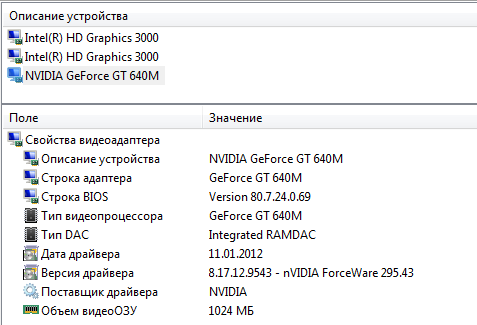
RAM operates in dual channel mode at a frequency of 1333 MHz.
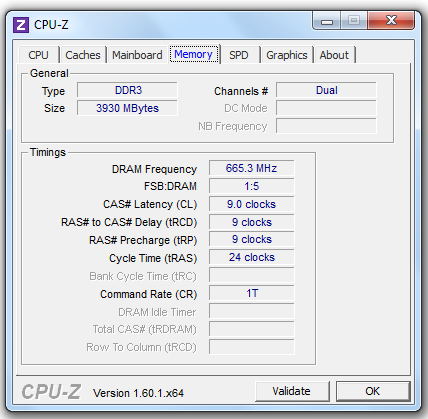

The disk subsystem consists of two parts - a regular hard disk.
Hitachi and SSD caching disk. Using Intel Rapid Start Technology
This combination takes the ultrabook out of sleep mode in just two seconds.
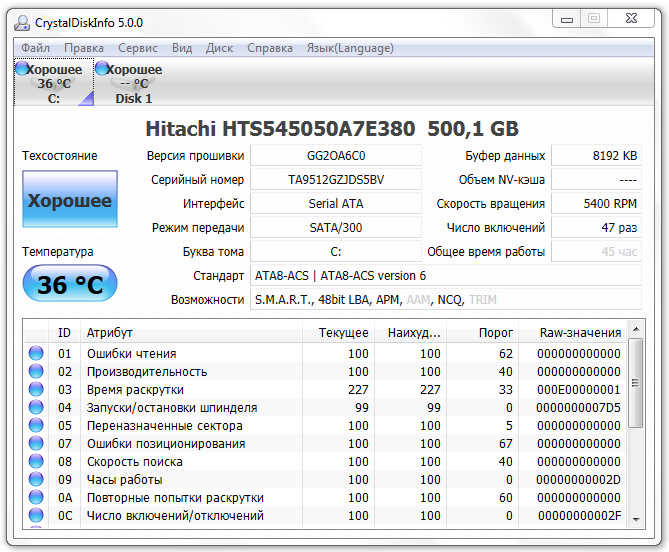
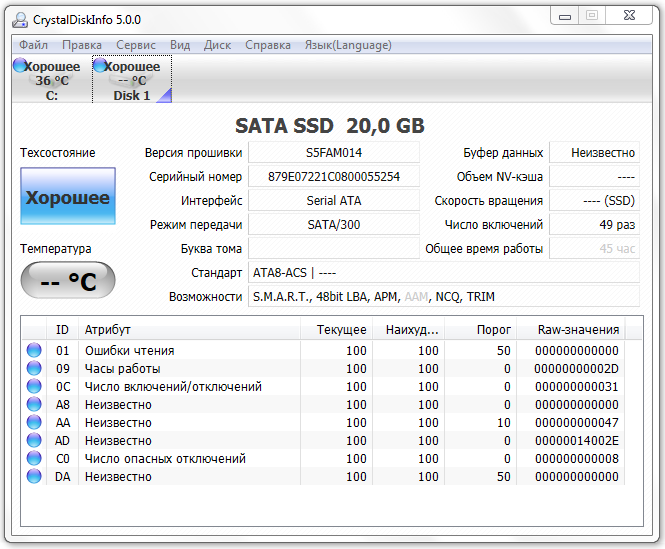
To assess the capabilities of the Acer Aspire M3, I drove a few tests.
Let's start, as usual, with a built-in assessment of Windows 7.
The weakest component is the graphics system, despite the fact that
using discrete graphics. Let me remind you that other ultrabooks
estimates did not exceed 5.2.
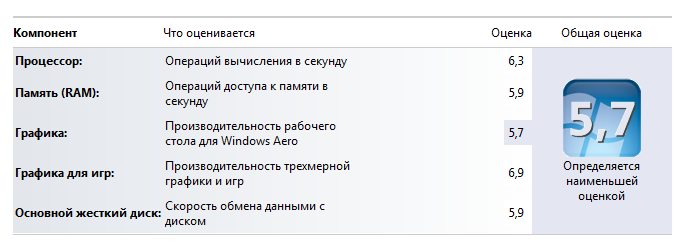
The speed of the RAM at a high level for ultrabooks.
More only ASUS Zenbook UX31E (from those I tested for this
moment).

But the speed of the hard drive frankly frustrating. Reading and
the recording of small blocks of 512 kB is difficult, yielding the same
hybrid solutions in other ultrabooks.
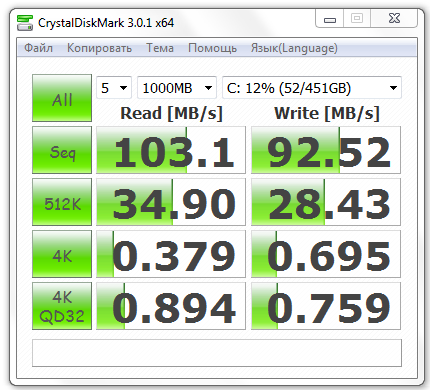
Comprehensive assessment using PC Mark gave the following results:
PC Mark 7 - 2294 points - this is not the highest figure. Toshiba Z830
due to the use of "pure" SSD has a little big results, but
compared to hybrid storage systems, the gap is
400 points in favor of the Acer Aspire M3 - here affects discrete graphics.

PC Mark Vantage - 6131 point - the best result. The performance of the system is at a high level, more dimensions would be more modest ...

PowerMark is more demanding than MobileMark 2007, so up to 5 hours
Intel's ultrabooks fall short, but the result is general
worthy. HP Folio 13 managed to survive longer.

"But my health is not very ..." (C) "Three of Prostokvashino."
The temperature is high, if not critical. 76 degrees not for
gentle male knees. Of course, you need to understand what works.
discrete graphics, but still would not want to feel hot
surface when working. The cooling system does not produce
loud noise, or do not panic, or the fan is quiet.
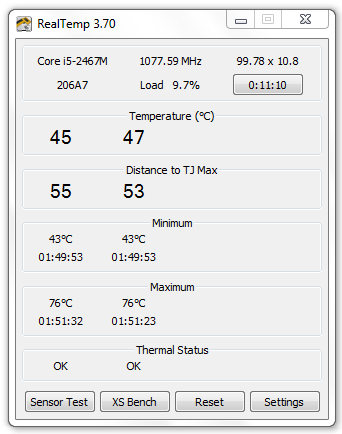
Final thoughts
Large, heavy productive - but at the same time rather thin, with
hybrid storage system, discrete graphics. Acer Aspire M3 not
makes an impression ultrabook. What did you like? Surely
Diablo III game - settings can be set higher than
than on integrated graphics. Liked the fact that there is a digital
keyboard. I liked the design, which is sure to distinguish from the masses
laptop users, but no one will understand what is in your hands
ultrabook I also liked the possibility of expanding the memory, though
I did so - I soldered 4 gigabytes and left the slot free. Price too
I liked it. In Yulmart device can be purchased for 29,440 rubles.
Disliked: screen, very sad, especially after FullHD IPS matrix
ASUS ZenBook Prime UX31A (its review will be on the other day). Location
power buttons (this is of course a personal niggle). Having a DVD drive with
tray, surely it would be better with a slot-loading. Slow SSD.
The ports on the rear panel are inconvenient, I often connect different flash drives.
What's the rest: the controversial model that gave a start, probably
dead-end, branches of "gaming ultrabooks." So far, the example of Acer is not
proved to be too contagious, although ASUS has already released the ZenBook UX32VD with
GeForce GT 620M.
Thank you for reading to the end, on this ultrabooks on the Intel platform
Sandy Bridge is over, now ahead of Intel Ivy Bridge, AMD A10 and
other goodies.
I ended up on the Intel Sandy Bridge platform. Extreme "ultrabook"
In this series I want to talk about - this is the Acer Aspire M3. Why in
quotes? Because the 15.6 "diagonal doesn’t fit into my ideas about
ultra-compact laptops, as well as weight 2
pounds. Why all the same, it belongs to this family and
What other surprises are hidden in this device, it is painted under the cut.

In order not to delay the answers to the questions that are stated before the kata
I'll start with four criteria that Intel calls
mandatory for the device to be called an ultrabook.
1) Ultra-thin - the device should be thinner than 18 mm for devices with
display up to 14 "and thinner than 21 mm for displays larger than 14" - Acer Aspire M3
has a thickness of 20 mm - meets the requirements of Intel? Yes.
2) Ultrafast - The processor must belong to the family of Intel Core
second or third generation and have a heat pack of 17 watts. My
option Acer Aspire M3 has an inside Intel Core i5 2467M with thermal
with 17 watts Corresponds to? Yes.
3) Instant Awakening - Exit sleep mode in less than 2 seconds,
exit from hibernation mode - in 7 seconds. SSD is used for this purpose.
small volume where data are stored and at the expense of the Intel technology
Rapid start requirement is met. And yes again.
4) Energy efficient - More than 5 hours of battery life even at the most
thin models according to indications MobileMark 2007. Discuss the quality and
the relevance of the test will not (I personally do not like it), but the requirements
Intel respected. For the fourth question, the answer is yes.
What we have is a 15.6 "screen, a keyboard with an additional digital
block, discrete graphics card GerForce GT 640M, DVD-drive, weight 2.1
kilograms - and all this is called ultrabook?!?
But what about SSD drives, thin lines, 13.3 "screens, weight about a kilogram?
How does the comparison with the MacBook Air?
Apparently nothing. It seems to me that "the world has moved from its place" and soon everything
computers that can be carried (read, all laptops)
will be called ultrabooks. Not because Intel wants it, but because
that the trend towards refinement and autonomy can be traced
long time ago, and now the right moment has arrived.
Alienware gaming monsters will remain in their niche
tablets will take their own, and classic laptops will disappear altogether. However,
This is the lyrics, the answer to the question - why is this what I intend to tell
called an ultrabook is obtained, so let's proceed to the discussion
the test subject.

Good people from Acer think about their customers and the box has a pen for
carrying. Making minimalist - white cardboard, two photos of the device,
vendor's logo and mention that Acer is official
partner of the Olympic Games.

The kit also does not please with special excesses. Two guides and everything.
There are no covers, adapters and other small things that can
cause a short-term release of endorphins in the blood.

And here is the scourge of ultrabooks - the charger. Already simply no strength
talk about it, well, I want damn compactness, although where did she come from
in a 15.6 "screen.
')
The following configuration of Acer Aspire M3 fell into my hands
| CPU | Intel Core i5 2467M (1.6 GHz), 2 cores, L3 3 MB cache, NT, TDP 17 W |
| Chipset | Intel HM77 Express |
| RAM | 4 GB DDR3 1333 MHz in dual channel mode (one bracket 2 GB and 2 GB soldered on the motherboard) |
| Video card | Intel HD Graphics 3000 core speed dynamically varies from 350 MHz to 1150 MHz + NVIDIA GeForce GT 640M (405 MHz is the frequency of the graphics core and 900 MHz is the frequency of the video memory) |
| Network devices | Wi-Fi 802.11 b / g / n, Bluetooth, Gigabit ethernet |
| Storage System | HDD: Hitachi 500 Gb SATA II + SSD: SATA II 20 Gb |
| Integrated devices | 1.3 MP webcam, microphone, DVD-multi drive |
| Ports for connecting devices | Two USB 2.0 ports, one USB 3.0 port, one HDMI port, one combo audio jack (headphone and microphone), one gigabit port Ethernet one VGA port, 1 SDXC / SDHC / SD / MMC card reader |
| Display | 15.6 ”, resolution 1366 * 768 |
| Battery | 3-section, Li-Ion, 4850 mAh |
| Weight | 2.1 kg |

The case of the Acer Aspire M3 looks interesting, the aluminum cover is painted in
black color. It is the manufacturer's logo.

The power button is nontrivial and many times from the first
will find her. Engineers hid it on the front edge of the ultrabook, next to
power and charge indicators. Hard Drive Activity Indicator
absent altogether.

Stickers have not disappeared, but it is worth noting that this time
used stylish gray instead of multi-colored. Logo appeared
NVIDIA GeForce GT.

The right side of the ultrabook is free of additional decorations, here is only the logo of the Timeline series.


Keyboard island type, the keys have a short stroke, letters
English and Russian layouts are applied in the same white color. On right
there is an additional digital block that is optional
advantage for those who work a lot with digital data.

The touchpad is large and comfortable, the keys are not structurally highlighted. To some
I do not like the shift of the touchpad relative to the center of the ultrabook, but this
a matter of habit.

Another surprise from engineers. All ports are located on the rear panel.
Damn inconvenient solution for me, every time I need to connect
USB flash drive, you have to lift the laptop or cover the lid. However,
if frequent carrier changes are not required, the solution will be convenient,
because the wires do not crawl on the table and do not interfere with the mouse
or documents.

On the left, the Acer Aspire M3 has a DVD drive and an SD / MMC memory card reader.
On the matrix of the laptop I will say a few neutral words. Of course, 15.6 "is the most common matrix format and 1366 * 768 is the most
common resolution, but in an ultrabook I would like to see
1600 * 900 (holivar on this topic has been going on for a long time). The advantages include
you can only the fact that this permission will easily pump
GeForce GT 640M graphics card. By cons - glossiness (and on this topic
holivar is coming), terrible viewing angles (hi TN matrix) and uneven
flare. The budget of the used matrix is reflected in full.
With the appearance of everything seems to be clear, inside the Acer Aspire M3 dig deeper
can be with pleasure. A small cover allows access to the hard
disk, RAM, SSD drive and wireless network controller.


After dismantling the memory strip, you can contemplate chips soldered on the board
Memory in the amount of 4 pieces. 4 more are located on the back
fees. Manufacturer - Elpida. The same Elpida BDBG chips are used.
on many budget memory modules for desktop computers.

Here is a separate module. Manufacturer company Micron, capacity 2
gigabyte speed rating of 10600, which corresponds to the frequency of 1333 MHz.
The module can be replaced with analogs with a capacity of 4 gigabytes, increasing
The most total amount of RAM is up to 6 gigabytes. Support 8
gigabyte is not claimed, I didn’t have such a bar at hand,
so I could not check.

The SSD uses Toshiba’s memory; the controller is
sealed with a company sticker. But this is not a problem =). As
controller chip acts Phison PS3105-S5-1, a similar
the solution is applied in the desktop SSD Patriot Torqx 2. It’s not to say
That this is the fastest controller, rather a budget option.

Wireless network controlled by Atheros AR5B97 module supporting b / g / n standards

This is the reverse side of the motherboard. Here you can see
The remaining 4 RAM chips. Next to the cooling system
1 gigabyte of video memory is decoupled.


For video memory, Hynix chips are used.

The sweetest - the battery. The output voltage is 11.1 V,
capacity 4850 mAh. According to Intel’s requirements, this battery should
ensure the life of the ultrabook for at least 5 hours.
Intel Core i5 2467M processor clocked at 1.60 GHz, in mode
TurboBoost it rises to 2.30 GHz, and if not required
use of resources - reduced to 800 MHz. Physically
dual-core processor capable of handling four data streams
thanks to HyperThreading technology. Processor Heat Pack - 17
Watt.



video core Intel HD Graphics 3000. When the power adapter is connected
the user can work with the GeForce;
graphics off, moving to integrated.



RAM operates in dual channel mode at a frequency of 1333 MHz.


The disk subsystem consists of two parts - a regular hard disk.
Hitachi and SSD caching disk. Using Intel Rapid Start Technology
This combination takes the ultrabook out of sleep mode in just two seconds.


To assess the capabilities of the Acer Aspire M3, I drove a few tests.
Let's start, as usual, with a built-in assessment of Windows 7.
The weakest component is the graphics system, despite the fact that
using discrete graphics. Let me remind you that other ultrabooks
estimates did not exceed 5.2.

The speed of the RAM at a high level for ultrabooks.
More only ASUS Zenbook UX31E (from those I tested for this
moment).

But the speed of the hard drive frankly frustrating. Reading and
the recording of small blocks of 512 kB is difficult, yielding the same
hybrid solutions in other ultrabooks.

Comprehensive assessment using PC Mark gave the following results:
PC Mark 7 - 2294 points - this is not the highest figure. Toshiba Z830
due to the use of "pure" SSD has a little big results, but
compared to hybrid storage systems, the gap is
400 points in favor of the Acer Aspire M3 - here affects discrete graphics.

PC Mark Vantage - 6131 point - the best result. The performance of the system is at a high level, more dimensions would be more modest ...

PowerMark is more demanding than MobileMark 2007, so up to 5 hours
Intel's ultrabooks fall short, but the result is general
worthy. HP Folio 13 managed to survive longer.

"But my health is not very ..." (C) "Three of Prostokvashino."
The temperature is high, if not critical. 76 degrees not for
gentle male knees. Of course, you need to understand what works.
discrete graphics, but still would not want to feel hot
surface when working. The cooling system does not produce
loud noise, or do not panic, or the fan is quiet.

Final thoughts
Large, heavy productive - but at the same time rather thin, with
hybrid storage system, discrete graphics. Acer Aspire M3 not
makes an impression ultrabook. What did you like? Surely
Diablo III game - settings can be set higher than
than on integrated graphics. Liked the fact that there is a digital
keyboard. I liked the design, which is sure to distinguish from the masses
laptop users, but no one will understand what is in your hands
ultrabook I also liked the possibility of expanding the memory, though
I did so - I soldered 4 gigabytes and left the slot free. Price too
I liked it. In Yulmart device can be purchased for 29,440 rubles.
Disliked: screen, very sad, especially after FullHD IPS matrix
ASUS ZenBook Prime UX31A (its review will be on the other day). Location
power buttons (this is of course a personal niggle). Having a DVD drive with
tray, surely it would be better with a slot-loading. Slow SSD.
The ports on the rear panel are inconvenient, I often connect different flash drives.
What's the rest: the controversial model that gave a start, probably
dead-end, branches of "gaming ultrabooks." So far, the example of Acer is not
proved to be too contagious, although ASUS has already released the ZenBook UX32VD with
GeForce GT 620M.
Thank you for reading to the end, on this ultrabooks on the Intel platform
Sandy Bridge is over, now ahead of Intel Ivy Bridge, AMD A10 and
other goodies.
Source: https://habr.com/ru/post/148691/
All Articles